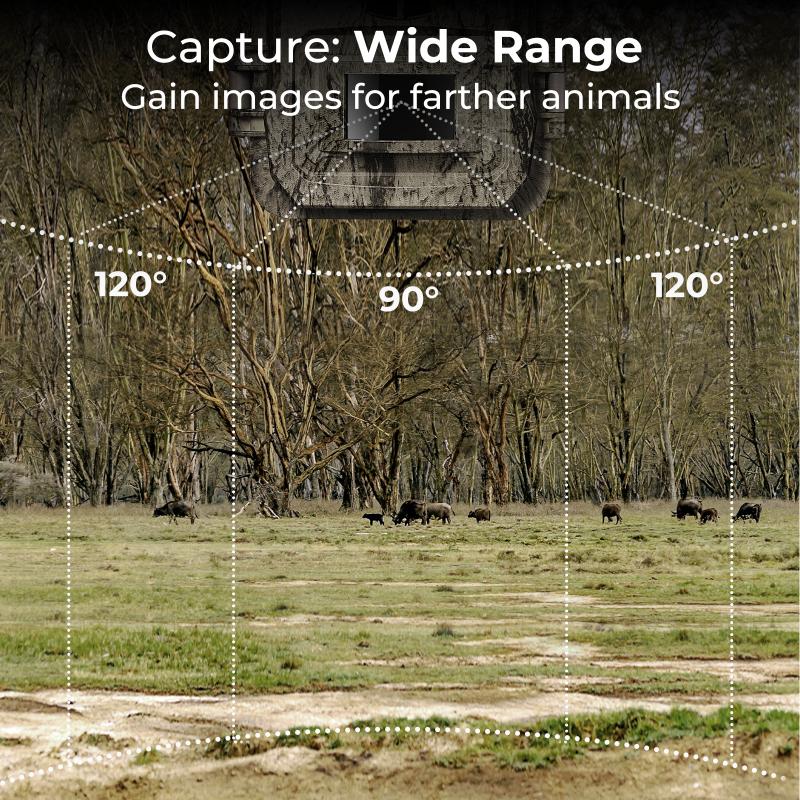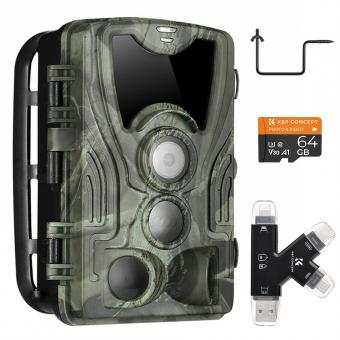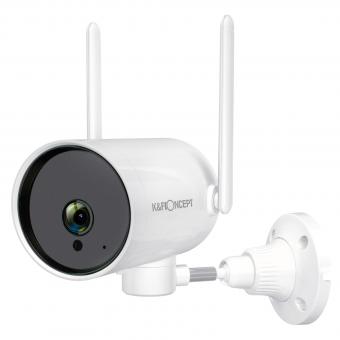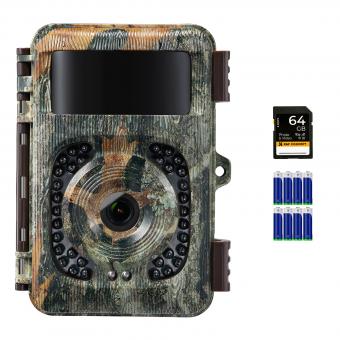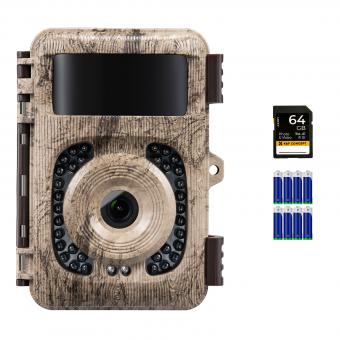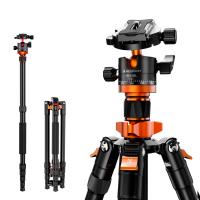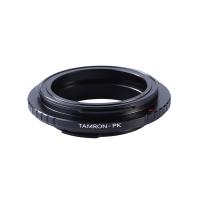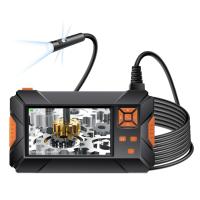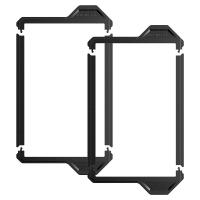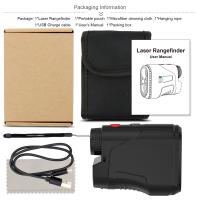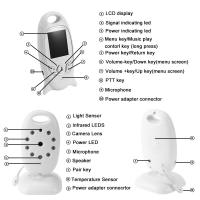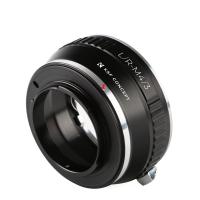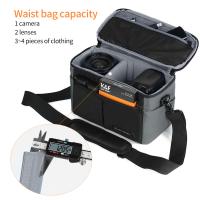How Wifi Securit Camera Stores To Ftp ?
A WiFi security camera can store footage to an FTP (File Transfer Protocol) server by configuring the camera's settings to upload the recorded videos or images directly to the FTP server. This can typically be done through the camera's web interface or dedicated software provided by the manufacturer. The user needs to provide the FTP server's address, username, password, and the directory where the files should be stored. Once the settings are saved, the camera will automatically transfer the recorded footage to the specified FTP server at regular intervals or when triggered by motion detection. This allows for remote storage and access to the camera's recordings, providing an additional layer of security and backup.
1、 Wireless Connectivity: Establishing a connection between the camera and Wi-Fi.
Wireless connectivity is a crucial aspect of modern security cameras, allowing them to transmit data over Wi-Fi networks. When it comes to storing footage from these cameras to an FTP (File Transfer Protocol) server, there are several methods and considerations involved.
Firstly, the camera needs to establish a connection with the Wi-Fi network. This typically involves configuring the camera's settings to connect to the desired network using the network's SSID (Service Set Identifier) and password. Once connected, the camera can communicate with other devices on the network, including the FTP server.
To store footage to an FTP server, the camera needs to be configured with the FTP server's address, username, and password. This information allows the camera to establish a connection with the server and transfer the recorded footage. The camera may have a built-in FTP client or require the installation of specific software to facilitate this process.
It is important to ensure that the FTP server is secure and properly configured to receive and store the camera's footage. This includes setting up appropriate user permissions, encryption protocols, and regular backups to prevent data loss.
From a latest point of view, advancements in technology have made the process of storing footage to an FTP server more streamlined and user-friendly. Many modern security cameras offer intuitive interfaces and mobile apps that simplify the configuration process. Additionally, cloud-based storage solutions have become increasingly popular, allowing users to store their footage securely and access it remotely.
Overall, the process of storing footage from a Wi-Fi security camera to an FTP server involves establishing a wireless connection, configuring the camera's settings, and ensuring the FTP server is properly set up for secure data storage.

2、 Camera Setup: Configuring the camera to store footage to FTP.
Camera Setup: Configuring the camera to store footage to FTP.
When setting up a WiFi security camera, one of the options for storing footage is to use FTP (File Transfer Protocol). FTP allows for the seamless transfer of files from the camera to a remote server, ensuring that the footage is securely stored and easily accessible.
To configure the camera to store footage to FTP, you will need to follow a few steps:
1. Determine the FTP server details: You will need to gather the necessary information about the FTP server you plan to use. This includes the server address, port number, username, and password. This information is typically provided by the FTP service provider or can be set up on your own server.
2. Access the camera's settings: Connect to the camera's interface using a web browser or a dedicated software provided by the manufacturer. This will allow you to access the camera's settings and configure the FTP storage option.
3. Enable FTP storage: Within the camera's settings, locate the storage or recording options. Look for the FTP storage option and enable it. You may need to provide the FTP server details mentioned earlier, including the server address, port number, username, and password.
4. Set up recording parameters: Depending on the camera model, you may have the option to customize the recording parameters. This includes setting the recording schedule, motion detection sensitivity, and video quality. Adjust these settings according to your preferences and requirements.
5. Test the FTP connection: Once the FTP storage option is enabled and the settings are configured, it is essential to test the connection. This can be done by initiating a test recording and verifying that the footage is successfully transferred to the FTP server.
It is worth noting that the latest advancements in WiFi security cameras have made the setup process more user-friendly. Many cameras now offer intuitive mobile apps that simplify the configuration process, allowing users to easily set up FTP storage and access their footage remotely.
In conclusion, configuring a WiFi security camera to store footage to FTP involves gathering the necessary FTP server details, accessing the camera's settings, enabling FTP storage, setting up recording parameters, and testing the FTP connection. With the latest advancements in camera technology, this process has become more streamlined and user-friendly, ensuring that users can securely store their footage and access it remotely.
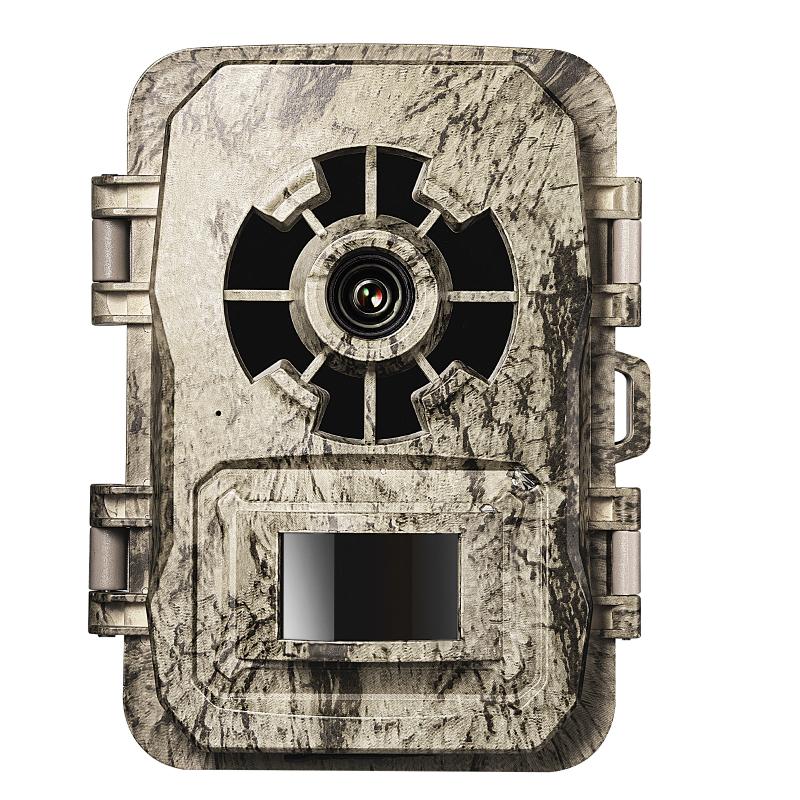
3、 FTP Configuration: Setting up the FTP server for receiving camera footage.
FTP (File Transfer Protocol) is a commonly used method for transferring files over a network. When it comes to WiFi security cameras, FTP can be used to store camera footage remotely on an FTP server.
To set up the FTP server for receiving camera footage, you need to configure the camera's settings to connect to the FTP server. This typically involves accessing the camera's web interface and navigating to the network settings section. From there, you can enter the FTP server's address, port number, username, and password.
Once the camera is connected to the FTP server, it will start sending the recorded footage to the server at regular intervals or when triggered by motion detection. The footage is usually stored in a specific folder on the FTP server, which can be organized by date or other criteria.
It is important to ensure that the FTP server is properly configured to receive and store the camera footage. This includes setting up appropriate permissions and access controls to protect the stored data. Additionally, it is recommended to use secure FTP protocols such as FTPS (FTP over SSL/TLS) or SFTP (SSH File Transfer Protocol) to encrypt the data during transmission and storage, adding an extra layer of security.
In recent years, there has been a shift towards cloud-based storage solutions for security camera footage. These solutions offer more convenience and scalability, as the footage is stored in the cloud and can be accessed from anywhere with an internet connection. However, FTP remains a viable option for those who prefer to have more control over their data and want to store it on their own FTP server.

4、 File Transfer Protocol: Understanding the protocol used for transferring files.
How WiFi security cameras store to FTP is by utilizing the File Transfer Protocol (FTP). FTP is a standard network protocol used for transferring files between a client and a server on a computer network. It provides a simple and efficient way to upload and download files from one device to another.
When it comes to WiFi security cameras, FTP is commonly used as a storage option for recorded footage. The camera captures video or images and then transfers them to an FTP server for storage. This allows users to access and retrieve the recorded footage remotely.
To set up FTP storage for a WiFi security camera, you typically need to configure the camera's settings to connect to an FTP server. This involves providing the server's address, username, password, and other necessary details. Once the camera is connected to the FTP server, it can start transferring the recorded files to the designated storage location.
FTP storage offers several advantages for WiFi security cameras. It provides a reliable and secure method for storing footage, ensuring that it is safely stored and accessible when needed. Additionally, FTP allows for easy remote access to the stored files, enabling users to view and download the footage from anywhere with an internet connection.
It is worth noting that while FTP is a widely used protocol, there are newer and more secure alternatives available today. For instance, Secure File Transfer Protocol (SFTP) and File Transfer Protocol Secure (FTPS) provide enhanced security features, such as encryption, to protect the transferred files. These protocols are recommended for users who prioritize data security and privacy.
